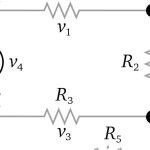The study of electrostatics is the study of electricity at rest. If you are confused about what is meant by electricity being at rest, just imagine the concept of current which results from flow of electrons. In the case of electrostatic we study the behaviour of electric charges which are not in motion.
The Charge
To understand the concept of a charge, think about an atom which is electrically neutral because it is composed of equal number of positive and negative charges in the form of protons and electrons respectively (neutrons are electrically neutral). The structure of the atom is such that the protons and neutrons are very tightly bound while the electrons encircling the nucleus are relative easier to dislodge. Hence the addition or removal of electrons from a neutral atom will cause it to become either positively or negatively charged.
Laws governing Electrostatics
There are two basic laws which govern the phenomenon of electrostatics as follows
· The first law is quite paradoxical as compared to human beings. Let me explain – what sort of friends you like to have? Most people like to mingle with like minded people but no so in the case of charges. The first law of electrostatics states that like charges repel each other while unlike charges attract each other. Of course this could be compared to the human trait of being drawn towards the opposite gender, may be the principle of electrostatics lies behind it
· The second law of electrostatics states that the attractive or repulsive force that is exerted between two charges particles is directly proportional to the strength of their charges and inversely proportion to the square of distance between the two charges. This means that bigger the charges, the more will be the force; the more distance they are apart, the lesser the force between them. This second law of electrostatics is also known popularly as the Coulomb’s law and is named after the great scientist Charles Augustin de Coulomb.
· Infact the unit of charge is also named in his honour and is known as coulomb. One coulomb is defined as that charge which when place in a strict vacuum at a distance of one meter from a similar charge, exerts a force equal to 9 * 10
· 9 Newtons. This force could be either attractive or repulsive depending on the fact whether the two charges are similar or opposite, as postulated by the first law of electrostatics.
· Mathematically the Coulomb’s law or the second law of electrostatics can be written as
F = 9*109 (Q1 * Q2)/d2
· Where Q1 and Q2 are the two charges with a distance d between them, and F is the force exerted by one charge over the other. It can be easily seen that this equation leads to the definition of a unit of charge as described previously. Another interesting corollary of this equation is that if the two charges are of different magnitude the force exerted by the lesser charge on the greater charge is the same as the greater charge exerts on the lesser charge.



Comments are closed